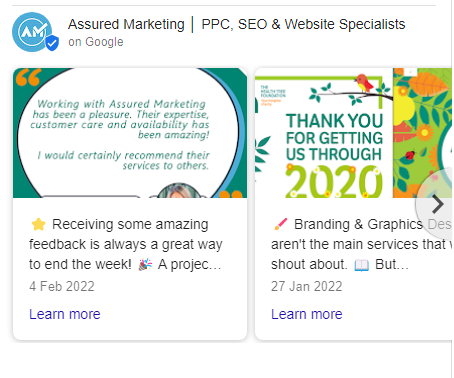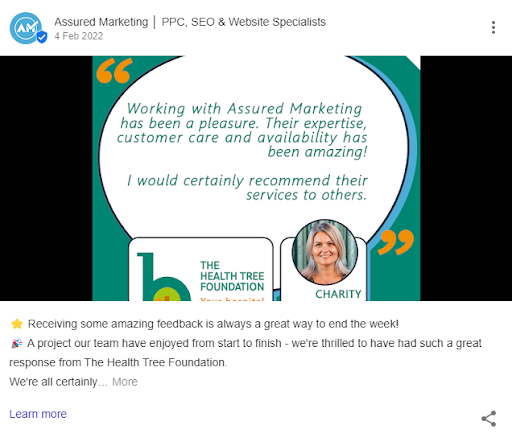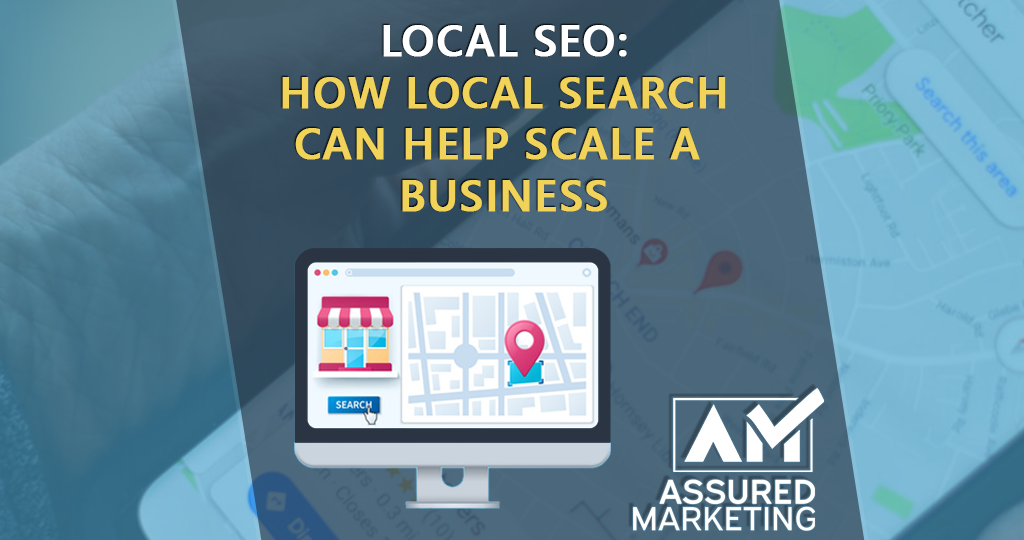According to data gathered by GoGulf, almost half (46%) of all Google Searches are made by users looking for local information, making Local SEO an integral part of location-based marketing.
These searches will be a variety of users looking for products, services and information. Consequently, having a local SEO strategy in place can position a business incredibly well for establishing digital dominance in their local market.
With this in mind, what are the different techniques that can be used in Local SEO to amplify a business’ reach in their service area? In this article we’re going to address just what Local SEO is and some of the ways it can be incorporated into an organisation’s digital approach.
What is Local SEO?
Local SEO is the practice of optimising aspects of a company’s website and Google My Business listing in order to rank the company higher in search results for terms used by people looking to buy from or engage with similar companies.
There is a common misapprehension that Local SEO is something only applicable to businesses with a physical trading location, that is certainly not the case. This digital marketing technique is applicable to any/all businesses that want to grow their customer base in a specific area, as well as enhance their local brand awareness.
The Different Areas of Local SEO
Whilst it is the case of Google having a number of different ways to display businesses based on their locality, for this article we are looking at focusing on Google My Business Listings and local Search Engine Results Pages (SERPs).
There are a multitude of different factors that Google takes into account when deciding where a business will appear in the results.
Google My Business
Google My Business is essentially the digital version of the old fashioned newspaper business directories. However, the crucial difference being that Google will prioritise local businesses which it believes are best suited to the users’ search query – and then present those in order of perceived quality.
As seen with the image below, when a user is searching for a restaurant in Covent Garden, London – they are presented with 3 restaurants that Google believes most closely match that query and offer the best experiences.
Users do have the opportunity to ‘View all’ here – though if we’re looking at a Local SEO strategy – then the end goal unequivocally needs to be to break the business into that top 3!
So what will Google look for in positioning a business in that golden zone? Well, there are a few although primarily there are 3 major things businesses need to consider, product/service listings, activity and feedback.
How well structured the Google My Business profile of a business is will greatly affect its ability to be shown higher for location based searches. It’s no secret that Google likes businesses who utilise as many aspects of their platforms as possible. Therefore, businesses who correctly display their products and services in the right places (or in the case of a restaurant, menu) are certainly going to be favoured above those which don’t.
Secondly, how active and informative the content being published on a listing will play a big part in it’s rankings. Similar to a Facebook or Twitter page, companies can treat their Google My Business listing similar to a social media platform – and use it to publish updates on the company in order to keep the listing as active as possible.
Consistently publishing relevant content here will most certainly give the search engine more to work with in understanding your business, as well as wanting to present the company’s profile to its users in an effort to ensure they find the information they are looking for.


Finally, and perhaps most importantly for Google My Business listings, user feedback (a.k.a. Reviews) are crucial to breaking into that top 3 positioning on results.
As detailed in the initial image of a search for ‘restaurants in Covent Garden’, Google will always try to offer its users the businesses it feels they will have the best engagements with.
In an attempt to do this, the most logical way for its algorithm to decide which companies are better than others, is to take reviews and customer feedback and use it to determine quality.
Therefore, businesses need to be doing everything possible to encourage past customers to provide feedback on Google My Business if they are wanting to climb up the ranks on this platform.
Targeting Local Searches Through A Website
When considering the fact that 92% of users will choose a business whose website appears on the first page of search results – it is vital for companies to consider not just their Google My Business listing but also how their site performs on SERPs.
But how can businesses manipulate these user habits in their favour? What should marketing teams be doing if they are to dominate local search in their sector? Well, there are a multitude of factors which search engines will take into consideration when prioritising which websites to display for certain queries. But when it comes to Local SEO, the process can be segmented into 3 comprehensive steps.
The first of these is to address on page location-based content. Drafting/creating landing pages which are specific to not only individual products/services but also the locations which are being targeted will help emphasise to search engines that the business is offering X in location Y.
Part of this process will need to be researched well. Analysing user search trends and the monthly volume of searches around location specific keywords will give the content the edge in targeting higher rankings for such search queries.
The metadata and page titles set for these pages will too need to focus on locations. Your search result should look attractive to local searchers and keywords that have been focused on when developing the written copy should also be implemented throughout your page title and meta-descriptions of each of these new location targeted pages
Note: these pages will need to be linked to from other areas of the website. A common mistake when implementing this technique can be to set up new locations as ‘orphan pages’ that are not linked to. Something which Google sees as negative and will also struggle to index correctly.
Secondly, these pages will need to be supported in order for Google to begin to trust them properly. This means improving their page authority with backlinks and making sure this is done with a hyperlocal strategy in mind.
Citations and ‘nofollow’ backlinks can be useful and are often much more easily attainable – so this can be looked at as a way to achieve quick wins through local directories. Listing on common web directories such as Yell or Cylex will certainly help affirm to Google your location and though ‘nofollow’ backlinks will not directly increase page authority, search engines do see them as somewhat more valuable than they previously did.
Attaining ‘dofollow’ links locally will be a much more difficult part of this process, but businesses do have some key options here.
Consider other businesses you have worked, collaborated and had good interactions with previously. These are great places in which you could look to generate local and relevant backlinks to your newly created location-based pages.
There is also the option to find local media outlets which are providing coverage on relevant issues and providing them with some content in exchange for links back to these local pages.
Finally, Core Web Vitals and Page Speed all need to be in top shape throughout the site. All of the content and authority in the world won’t make up for poor page loading speeds and with Google really emphasising this alongside mobile responsiveness as a key ranking factor – these areas need serious focus as part of your Local SEO strategy.
Running a website through a tool such as GTMetrix or Google Lighthouse will help to provide clarity on the performance of metrics such as page speed, server response time and more. From this report an action plan should be revised on which areas of the site will need improvement in a way that can benefit the SEO performance as well as the user experience (UX).
The Impact Local SEO Can Have
For businesses wanting to establish a local market dominance over competitors – Local SEO is massive in the efforts to achieve that goal. Studies from Forbes have found that of those conducting local searches for businesses up to 59% of them then contacted the business or purchased directly from their website.
With the rise in popularity for users to conduct location based searches in recent years, businesses should be looking at leveraging the power of a strong Local SEO strategy if they wish to increase revenue streams through digital platforms.
Responsible for marketing a business and want to explore the possibilities of a Local SEO strategy further?
Why not get in touch with Assured Marketing below and see how our expert team can get you on the right track to becoming the local leader in your industry.


0 Comments